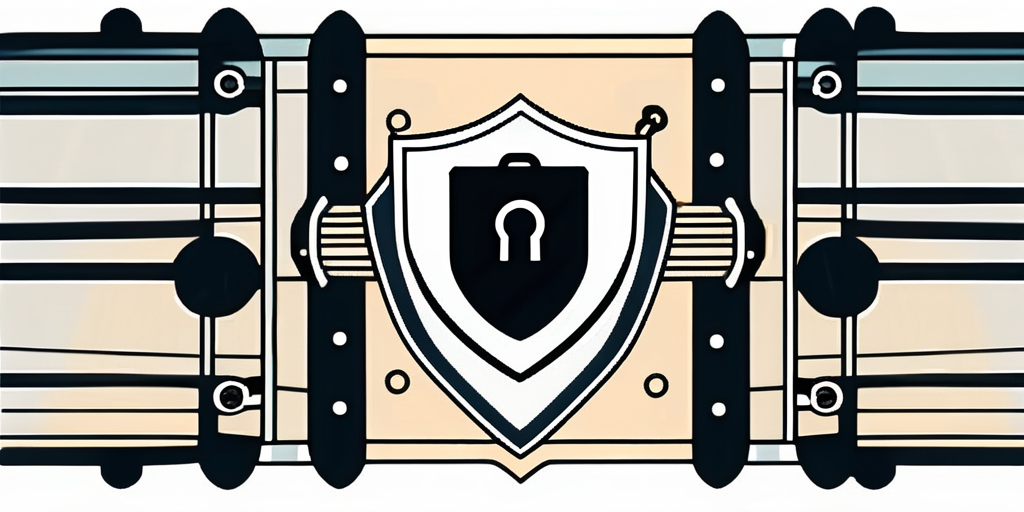In today’s digital landscape, where cyber threats are becoming increasingly sophisticated, it is important to be prepared and proactive in protecting ourselves against potential attacks. One such attack that has gained prominence is vishing, a form of social engineering where hackers use voice communication to deceive victims and gain access to sensitive information. In this comprehensive guide, we will explore the various aspects of vishing attacks, their recognition, immediate response, reporting, prevention, and the importance of training and education in combating this threat.
Understanding Vishing Attacks
To effectively protect ourselves from vishing attacks, it is crucial to understand their nature and how they are carried out. Let’s start by defining and providing an overview of vishing.

Vishing, short for voice phishing, is a type of cyber attack where fraudsters use phone calls to manipulate and trick individuals into providing sensitive information such as credit card details, social security numbers, or login credentials. These attacks exploit the element of trust associated with voice communication to gain unauthorized access to personal or financial information.
Now that we have a basic understanding of vishing, let’s delve deeper into the common techniques used in these types of attacks. By familiarizing ourselves with these tactics, we can be more vigilant and less susceptible to falling for their scams.
Common Techniques Used in Vishing Attacks
Vishing attackers employ a variety of techniques to deceive their victims. Understanding these tactics can help us be more vigilant and less susceptible to falling for their scams. Some common techniques used in vishing attacks include:
Impersonating trusted organizations
Attackers often pose as representatives from well-known companies or financial institutions, creating a sense of legitimacy and trust. They may claim to be calling from your bank, credit card company, or even government agencies. By impersonating these trusted organizations, they aim to manipulate victims into divulging sensitive information.
Using urgency and fear
Vishing attempts may involve threats or urgent messages, creating a sense of panic or fear to prompt immediate action from the victim. For example, the attacker might claim that your bank account has been compromised and that you need to provide your account details to prevent further unauthorized access. By exploiting emotions, they hope to bypass rational thinking and coerce victims into revealing confidential information.
Manipulating caller ID
By spoofing caller ID information, attackers can make their calls appear to be from a trustworthy source, further deceiving the recipient. They may use techniques to display a legitimate organization’s name or phone number on the caller ID, making it difficult for the victim to suspect foul play. This manipulation adds another layer of credibility to their scam, increasing the chances of success.
Building rapport and trust
Skillful attackers may engage in friendly conversation, building rapport with the victim before attempting to extract sensitive information. They might start by asking innocuous questions or engaging in small talk to establish a sense of trust and familiarity. By creating a friendly atmosphere, victims are more likely to let their guard down and provide the requested information without suspicion.
By understanding these common techniques used in vishing attacks, we can better protect ourselves from falling victim to these scams. Remember always to be cautious when receiving unsolicited phone calls, especially if they involve requests for sensitive information. If you suspect a vishing attempt, it is important to report it to the appropriate authorities and organizations involved.
Recognizing a Vishing Attack
Identifying the signs of a potential vishing attack is crucial in protecting ourselves from falling victim to these scams. Let’s explore some of the key indicators that can help us recognize such attacks.

Vishing, short for voice phishing, is a form of social engineering where scammers use phone calls to deceive individuals into revealing sensitive information or performing certain actions. It is important to stay vigilant and educate ourselves about the signs of a vishing attempt.
Signs of a Vishing Attempt
Awareness is the first line of defense when it comes to combating vishing attacks. Understanding the telltale signs of a vishing attempt can greatly reduce the chances of being deceived. Some signs to watch out for include:
- Unsolicited calls: If you receive a call from an unknown number or an unexpected source, exercise caution. Vishing attackers often rely on catching victims off guard.
- Request for sensitive information: Legitimate organizations rarely ask for sensitive information over the phone. Be wary of requests for credit card numbers, social security information, or login credentials. It is always best to verify the caller’s identity before sharing any personal data.
- High-pressure tactics: Vishing attempts often involve time-sensitive situations or urgent requests, attempting to pressure victims into divulging information without due consideration. Remember to take a step back, think critically, and never let urgency cloud your judgment.
- Unusual requests or offers: Be cautious if you receive offers or requests that seem too good to be true or deviate from the norm. Vishing attackers may try to entice victims with promises of prizes, discounts, or exclusive deals to lure them into their trap.
By staying alert and recognizing these signs, we can protect ourselves from falling victim to vishing attacks.
The Role of Caller ID in Vishing Attacks
Caller ID can be a valuable tool in determining the legitimacy of a phone call. However, vishing attackers have found ways to manipulate caller ID information to their advantage. It is important to be aware of how caller ID can be used in vishing attacks.
Attackers can spoof caller ID information, making their calls appear to be from a trusted source. This technique is known as “neighbor spoofing.” By using technology to fake the caller ID, scammers can give the impression that they are calling from a local area code or even from an organization that the victim recognizes and trusts.
For example, a vishing attacker may manipulate the caller ID to display the name of a well-known bank, creating a false sense of trust. This tactic aims to make the victim believe that the call is legitimate and that they should comply with any requests made by the caller.
It is important to remember that caller ID alone is not enough to determine the authenticity of a call. If you receive a call that appears to be from a trusted source but raises suspicions, it is always wise to independently verify the caller’s identity before sharing any personal or financial information.
By understanding the limitations of caller ID and being cautious of its potential manipulation, we can better protect ourselves from falling victim to vishing attacks.
Immediate Response to a Vishing Attack
If you suspect that a vishing attack is targeting you, it is essential to respond promptly and appropriately to protect yourself and your sensitive information. Let’s explore the steps you should take during and after a vishing call.
Steps to Take During a Vishing Call
During a vishing call, it is crucial to remain calm and focused. By following these steps, you can ensure your safety and minimize the risk of falling victim to the attack:
- Never provide sensitive information: In no circumstances should you share your credit card details, social security number, or any other personal or financial information over the phone.
- Ask for verification: If the caller claims to be from an organization you trust, verify their identity by independently contacting the official customer service channels of that organization.
- Terminate the call: If you suspect a vishing attempt, end the call immediately.
- Report the incident: Make a note of any pertinent details about the call and report the incident to the appropriate authorities.
When faced with a vishing call, it is important to remember that scammers often use various tactics to manipulate and deceive their targets. They may pose as representatives from reputable organizations, such as banks, government agencies, or tech support companies. These scammers can be highly persuasive and may use fear, urgency, or even flattery to gain your trust and extract sensitive information from you.
One common technique used by vishing scammers is spoofing, where they manipulate caller ID information to make it appear as if the call is coming from a legitimate source. This can make it challenging to identify a vishing attempt, as the caller may seem genuine at first glance. However, by staying vigilant and following the steps outlined above, you can protect yourself from falling victim to these fraudulent schemes.
Actions to Take After a Vishing Call
After a vishing call, it is important to take further actions to protect yourself and prevent potential harm:
- Change passwords: If you provided any login credentials during the call, change your passwords immediately for the potentially impacted accounts. It is advisable to use strong, unique passwords for each of your online accounts to minimize the risk of unauthorized access.
- Monitor your accounts: Regularly check your financial and online accounts for any suspicious activity or unauthorized transactions. Early detection of fraudulent activity can help you mitigate potential damage.
- Inform your financial institution: If you shared any banking or credit card information, contact your bank or credit card company and inform them of the situation. They can provide guidance on further steps to protect your accounts and may monitor your accounts for any unusual activity.
- Stay vigilant: Be extra cautious of any additional phone calls, emails, or messages that may be related to the initial vishing attempt. Scammers may try to follow up with additional attempts to deceive you or gather more information. If you receive any suspicious communications, do not engage and report them to the appropriate authorities.
Remember, vishing attacks are constantly evolving, and scammers are becoming increasingly sophisticated in their techniques. It is essential to stay informed about the latest scams and educate yourself on how to identify and respond to them. By staying proactive and following best practices for online security, you can reduce the risk of falling victim to vishing attacks and protect your personal and financial information.
Reporting a Vishing Attack
Reporting a vishing attack is crucial in helping authorities track down the scammers, prevent further attacks, and protect potential victims. Let’s explore when and how to report a vishing attack.
When and How to Report Vishing
If you have fallen victim to a vishing attack or suspect that you have received a vishing call, it is important to report the incident as soon as possible. You should report a vishing attack in the following circumstances:
- If you have shared sensitive information during the call
- If you have lost money or become a victim of identity theft as a result of a vishing attack
The reporting process may vary depending on your location and the severity of the incident. It is recommended to contact your local law enforcement agency, telecommunications provider, or relevant government agencies responsible for handling cybercrime cases for guidance on how to proceed.
Information Needed for Reporting
When reporting a vishing attack, providing accurate and detailed information will help authorities in their investigation. Some key information you may need to provide includes:
- Date and time of the call
- Phone number and caller ID displayed
- If possible, a recording or transcript of the call
- Any additional details about the conversation or the caller
Reporting a vishing attack is important for your own protection and the safety of others. By reporting the incident, you contribute to the collective effort in combating cybercrime and raising awareness about vishing scams.
When it comes to reporting a vishing attack, time is of the essence. The sooner you report the incident, the higher the chances of catching the scammers and preventing further harm. Remember, vishing attacks can have serious consequences, such as financial loss or identity theft, so it is crucial to take immediate action.
Once you have gathered all the necessary information, making a written report detailing the incident is recommended. Include as much information as possible, such as the content of the conversation, any suspicious or threatening statements made by the caller, and any other relevant details that could assist the authorities in their investigation.
In addition to reporting the incident to law enforcement and government agencies, it is also advisable to inform your bank or financial institution if you have shared any sensitive information or if you suspect fraudulent activity on your accounts. They can take necessary measures to protect your finances and prevent unauthorized access.
Remember, reporting a vishing attack is not just about seeking justice for yourself, but also about safeguarding others from falling victim to similar scams. By reporting the incident, you play an active role in raising awareness and helping authorities combat cybercriminals.
Preventing Future Vishing Attacks
While it is impossible to completely eliminate the risk of vishing attacks, there are proactive steps we can take to reduce our vulnerability and minimize the chances of falling victim to these scams.

Best Practices for Vishing Prevention
By following these best practices, you can significantly enhance your defense against vishing attacks:
- Be cautious of sharing information: Avoid sharing personal or financial information over the phone unless you are confident about the legitimacy of the call.
- Verify the caller: Independently verify the identity of the caller by contacting the official customer service channels of the organization they claim to represent.
- Keep software up to date: Regularly update your operating system, web browsers, and security software to ensure they have the latest security patches.
- Enable two-factor authentication: Enable two-factor authentication whenever possible to provide an extra layer of security for your accounts.
Tools and Technology to Combat Vishing
Technological advancements have led to the development of tools and solutions that can help combat vishing attacks. Some notable solutions include:
- Call-blocking apps: Install call-blocking apps on your smartphone that can identify and block known scam or spam numbers.
- VoIP security systems: Employ VoIP (Voice over Internet Protocol) security systems that can detect and prevent vishing calls.
- Security awareness training: Organizations can provide security awareness training to employees to educate them about vishing attacks and techniques to mitigate the risks.
Training and Education on Vishing
Creating a culture of awareness and providing adequate training on vishing can play a significant role in preventing successful attacks. Let’s explore the importance of training and education.
Importance of Awareness and Training
Increasing awareness about vishing attacks and educating individuals on how to identify and respond to such threats is crucial in protecting both individuals and organizations. Awareness and training programs can help individuals develop the necessary skills to recognize and avoid falling victim to vishing scams.
Key Elements of a Vishing Training Program
Effective vishing training programs should cover the following key elements:
- Identification: Teach individuals how to identify the signs of a vishing attempt and the different techniques employed by attackers.
- Response: Provide guidance on the immediate steps individuals should take if they receive a suspicious call, emphasizing the importance of never sharing personal or financial information.
- Reporting: Educate individuals on the reporting process, emphasizing the importance of reporting incidents promptly and providing accurate information.
- Continuous updates: Keep training programs up to date with the latest trends and techniques employed by vishing attackers to ensure maximum effectiveness.
By being vigilant, proactive, and well-informed, we can protect ourselves and our sensitive information from the ever-growing threat of vishing attacks. Remember, knowledge and awareness are our greatest defense against these malicious tactics. Stay informed, stay safe!
If you’re looking to bolster your organization’s defense against vishing attacks and other cybersecurity threats, Blue Goat Cyber is here to help. As a Veteran-Owned business specializing in B2B cybersecurity services, we understand the unique challenges you face. Our expertise in medical device cybersecurity, penetration testing, HIPAA compliance, FDA Compliance, SOC 2, and PCI penetration testing positions us to secure your business effectively. Contact us today for cybersecurity help, and let us protect your business and products from attackers.


